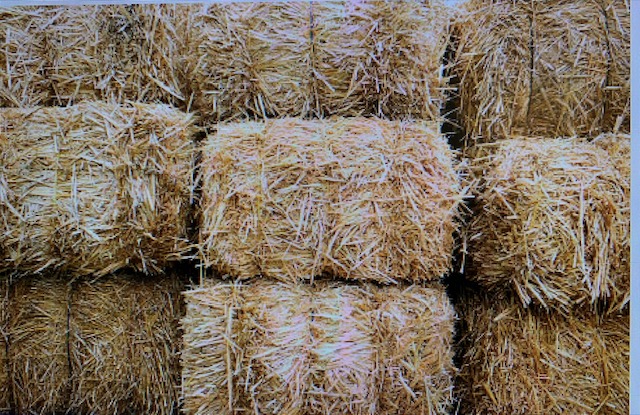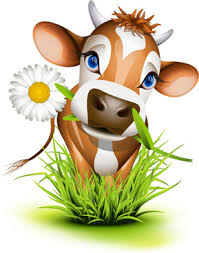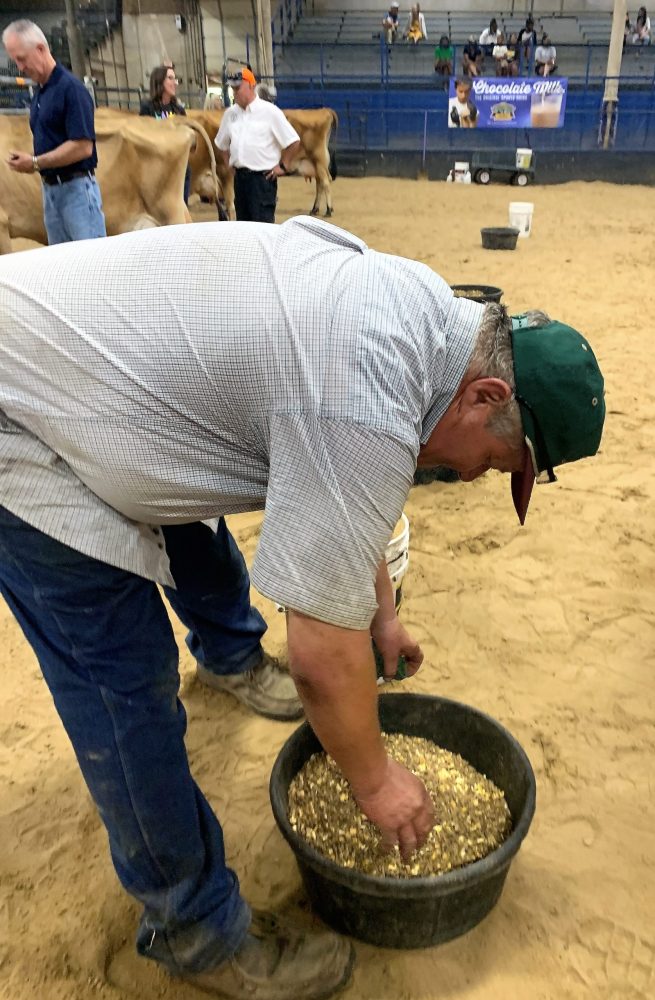By Mario Villarino, Texas AgriLife Extension Agent for Agriculture and Natural Resources in Hopkins County, [email protected]
Recently, during a livestock show in Sulphur Springs, I visited with somebody in the audience related to the show. As I was trying to explain the process, he recognized the complexity of agriculture today. He later on commented how difficult is for somebody like him to understand agriculture sometimes. He then suggested I write about agricultural principles to the general public without an agricultural background.

To many, agriculture comes as a second nature. Just like any other professional, we talk and learn about details related to the challenges we encounter. I am aware that as an educator, these “concerns” might not be shared with everybody and that those at starting points of their agricultural development can get lost.
Soon after the show, I received a phone call related to feeding of cattle. As I was preparing to call him back, I recognize how complex just this could be (feeding cattle) and how many scenarios and circumstances can influence the proper way to feed cattle.
Today, I am sharing with you strategies for feed supplementation of cattle with you. There are several reasons for me to address this topic with you today: a) although in a better situation than other parts of Texas, Hopkins County is suffering drought, which compromises forage quantity and quality; and b) because other regions of Texas where grains are produced are also also under drought conditions, the ingredients (also known as feedstuffs) normally used to feed cattle might or not be available to feed cattle at this time around.
Feeding cattle
A beef cow requires energy, protein, minerals, and vitamins in its diet. What determines how much of these nutrients is required? What determines if they need to be supplemented in the diet?
Many factors affect the amounts of required nutrients. A female performs many functions—body maintenance, activity, weight gain, reproduction, and milk production—that all require nutrients. The amount of nutrients required depends on body size, environmental conditions, how far an animal travels, desired rate of gain, stage of gestation, and level of milk production.
The nutritional value and quantity of available forage determine if nutrients need to be supplemented in the diet. During most of the year, warm-season forages are likely to be deficient in some minerals, especially phosphorus and certain trace elements like copper and zinc. In most situations, supplementation should include at least year-round provisions of salt and a mineral with 8-12% phosphors and a similar level of calcium. Vitamin A, which usually is low in dry or weathered forages, should be injected or fed in mineral or other supplements if it is suspected to be deficient. Mineral and vitamin supplementation should be a high priority because deficiencies can be corrected for relatively little cost.
After addressing mineral and vitamin needs, protein and energy deficiencies must be considered. Forage protein and energy vary seasonally. Warm- season forage typically becomes deficient in protein in mid-summer and again in winter. Forage lacks adequate energy content primarily in winter, but energy available to the animal is restricted more often by a limited supply of forage rather than by deficiencies in plant composition.
Factors Affecting Supplementation
Many factors affect the type and amount of protein or energy supplement that a beef cow may require. There are six critical factors that affect supplementation needs.

- Forage Quantity. The amount of available forage obviously affects the need for supplemental feed. If grazing or hay will be limited, take immediate action. Reduce the number of animals in order to lessen the need for supplemental feeding of the remaining cows. As forage supply declines, the opportunity for animals to selectively graze decreases, and so does diet quality. Then, supplementation may become necessary even if animal numbers are reduced.
- Forage Quality. Poor quality forage has less than 6-7% crude protein (CP) and is low in digestibility, with less than 50% total digestible nutrients (TDN). These deficiencies limit the amount of such forage that an animal can eat. Because both consumption and nutrient content of poor quality forage are low, supplemental needs are high. Medium quality forage (7-11% CP, 50-57% TDN) eliminates or significantly reduces the need for supplementation. High quality forage (above 12-14% CP and 57% TDN) can be consumed in the largest amounts and usually removes any need for supplementation, except possibly for high milking cows in low body condition. However, forage that is high in quality but low in quantity, a common situation in early spring, increases the need for supplementation of dietary bulk and energy. The amount a cow can eat in a day ranges from as little as 1.5% of body weight for very low quality forage to near 3.0 % for very high quality forage. The typical amount is 2.0-2.5%.
- Body Condition. The level of body condition (amount of fat) affects supplemental requirements. Low body condition markedly increases the need for supplemental nutrients, and meeting such needs often is cost prohibitive. Moderate body condition significantly reduces or eliminates the need for supplements. Fleshy cows generally need little if any supplement and the daily amount of forage required often can be reduced. If forage consumption is not reduced, higher production is possible or reserves of stored body energy can be maintained.
- Body Size. The potential for forage consumption is related to body size, so larger animals may not require more supplement than smaller ones. Adjustments in stocking rate, to allow adequate amounts of forage per cow, may offset differences in size but will increase the cost per cow. But if forage is sparse or limited, larger cows require proportionately more supplement.
- Milking Level. Higher milking cows can consume somewhat more forage, but not enough to completely satisfy extra needs. When forage quality is inadequate, higher milking cows need more supplement; from 50%t to 100% more may be required for high versus low milk production in cows of the same body size.
- Age. Young animals are still growing and require extra nutrients, but their body size is not as large as mature animals. Because of their smaller body size, growing heifers cannot consume as much forage as mature cows. For these reasons, young females require higher quality diets than mature cows and often require more and different supplements.
Feeds for Supplementation
What are some protein and energy supplements and how should they be used?

- Oilseed Meals. Cottonseed, soybean, and peanut meals often are manufactured as large pellets or cubes for feeding convenience. These are high protein (38-45 % CP), medium to high energy sources, commonly fed at 1-3 pounds a day. Although relatively costly per ton, they often are the cheapest source of protein. These feeds are most useful when supplemental protein, and little or no energy, is needed. Oilseed meals are especially suitable for dry cows in moderate to good flesh when they have access to adequate amounts of low protein, medium energy forages.
- Grain. Corn and grain sorghum (milo) are the most common low protein, high energy sources. Other grains include oats, wheat, and barley. Grains often are the cheapest sources of supplemental energy. Similar feeds include processed by products such as wheat mids, soybean hulls, and rice bran. These by products are slightly higher in protein and a little lower in energy than grains and are relatively low in starch. Starch can interfere with forage digestibility, so these are excellent supplements to forage. Feeds in this category commonly are found in breeder/range cubes.
- Breeder/Range Cubes. These are most commonly 20% CP but also are found as 30-32% products. These feeds are designed to provide a combination of protein and energy, fed in larger amounts (3 to 6 pounds a day) than high protein feeds. The equivalent of a 20% cube can be prepared with a mix of about one-third oilseed meal and two-thirds grain. A mix of about three-fourths meal and one-fourth grain is the equivalent of a 32% cube. Some cubes use nonprotein nitrogen (NPN), usually urea, to supply nitrogen for potential synthesis of rumen microbial protein. Cubes with low crude fiber (below 10%) generally are highest in energy. Whole cottonseed, brewers grains, and some corn gluten meals are similar in protein and energy content to these cubes.
- Protein Blocks and Liquids. These feeds usually contain 30-40% CP and typically are low to medium in energy. Their formulation or physical structure limits consumption to around 1 pound to 3 pound s daily. The protein portion often consists of 50-90% from NPN, but can be considerably lower. Their primary use is to provide supplemental protein on low protein, medium energy forages (below 7% CP, 50-52% TDN) where convenience of self-feeding is a priority. These feeds generally will not fill large voids of nutrient deficiency, nor support higher levels of animal performance.
- Syrup Blocks and Tubs. These generally range from 12% to 24% CP (often about half from NPN) and are medium in energy. Consumption of these blocks usually is very low (typically 1/2 pound to 1 1/2 pounds a day), so higher protein versions probably are most useful. These products are not intended to directly supply much supplemental protein or energy. Rather, their theoretical function is to stimulate rumen microbes to digest more forage and produce microbial protein, which can be utilized in the small intestine. For this to occur, sufficient amounts of at least moderately digestible forage must be available. These feeds work best when supplied year round, allowing accumulation of body fat reserves that animals can utilize during typical fall and winter decline in forage quality and quantity. They generally will not support high performance.
- Hays. High quality hays, such as alfalfa, peanut, and soybean, can be used as supplements. These medium protein (usually 15-20% CP), medium energy sources can be limit-fed in place of one of the feeds discussed previously. Such hays also can be fed free choice, although protein is wasted, if their cost is competitive.
Supplementation Strategies
Supplements must be chosen to meet particular nutrient deficiencies. Body condition is a key factor in the choice of supplements. Thin cows are relatively more deficient in dietary energy than in protein. In contrast, fleshier cows may need extra protein, if they need anything.
To minimize supplementation, use forage supplies logically. In general, hay (excluding supplemental alfalfa, etc.) should not be limit-fed with standing forage. Limit-feeding of hay encourages cows to reduce grazing and fails to use pastures while quality is reasonably good. For example, assume available forage for grazing or feed ing includes some tame pasture (such as coastalber mudagrass), some native range, and some hay. As winter approaches, the tame pasture should be used first, native range next, and hay last. That way each forage is utilized most efficiently, and there is a better chance some hay will be left in late winter to early spring when high quality green growth begins but is limited in amount.

It is difficult to make general recommendations about supplementation of protein and energy. Usually, dry mature cows in medium or higher body condition on typical dormant warm-season pasture or low quality hay often need only 1 pound to 2 pounds a day of a high protein feed. (On extremely low quality forage, such as tall-grass prairie in winter, 3 pound s to 4 pound s of high protein feed may be needed.) A thin, dry, mature cow may require 2 pound s to 4 pound s daily, but of a medium -protein, high-energy supplement. After calving, all of these amounts essentially should be doubled.
Daily feeding usually is not necessary when using high-protein supplements such as cottonseed meal cubes. Instead, depending on the amounts, weekly required totals can be divided and fed every other day, twice a week, or even once a week. In fact, nondaily feeding of these supplements often is more efficient. However, combination protein-energy supplements, especially breeder /range cubes and meal-grain mixes, that are required in larger daily amounts, generally should be fed daily for best forage utilization, highest animal performance, and greatest efficiency.
Self-fed, controlled consumption can be accomplished with some feeds, especially oilseed meals and meal-grain mixes, by including an intake limiter such as salt. Cattle then will consume salt in maximum amounts of approximately 0.1% of body weight, or about 1 pound of salt consumption daily by a 1,000 -pound cow. So, to obtain supplement consumption of 3 pound s daily in a 1,000 – pound cow, a mix of 1 pound salt to 3 pound s supplement should be provided. When using salt to limit consumption, plenty of high quality water must be available. Also, cows consume more of a salt-limited supplement when it is located close to a water supply.
Perhaps the most common supplement is a high quality 20% CP breeder /range cube (high or all-natural protein and low crude fiber ), or the equivalent. Such a supplement often is a compromise for the common situation of low quality forage and low to medium body condition. But this must be fed in adequate amounts, typically 3 to 6 pound a day, to be effective. In fact, with the exception of managing weight loss in fleshy cows, there are few situations where feeding smaller amounts of such cubes is applicable. If a producer is unwilling or unable to assume the cost of required amounts of these cubes (or the equivalent), then a lower amount of a higher protein feed should be fed. But realize, however, that body condition, reproduction, productivity, and profit are likely to decline if nutrient requirements are not met.
For more information on this or any other agricultural topic please contact the Hopkins County Extension Office at 903-885-3443 or email me at [email protected].





